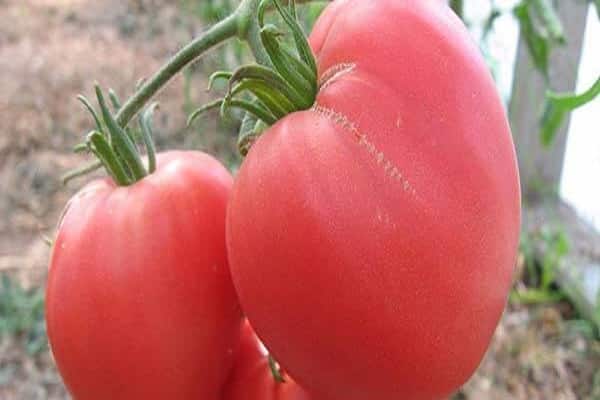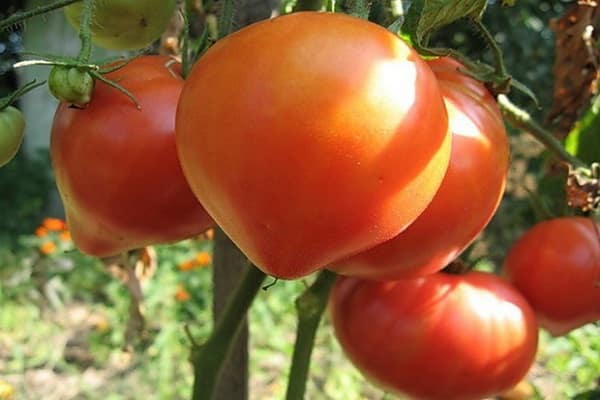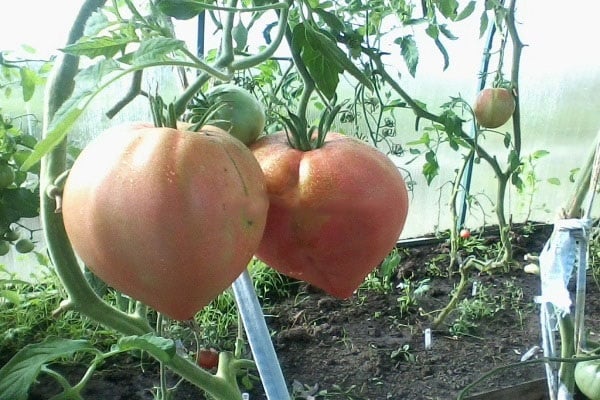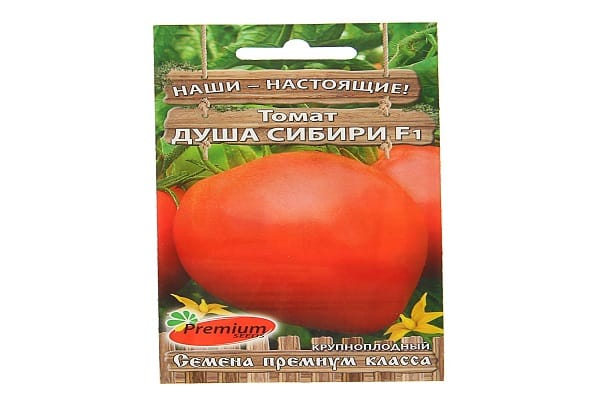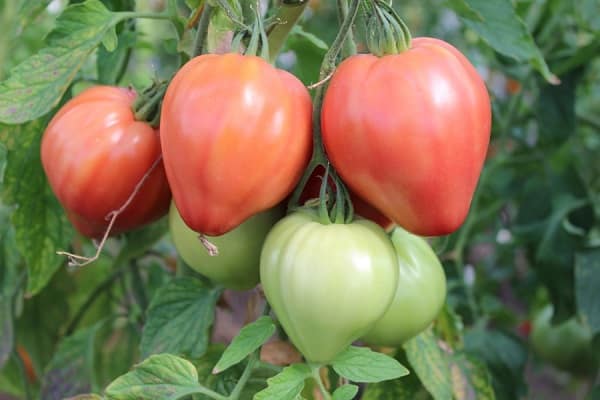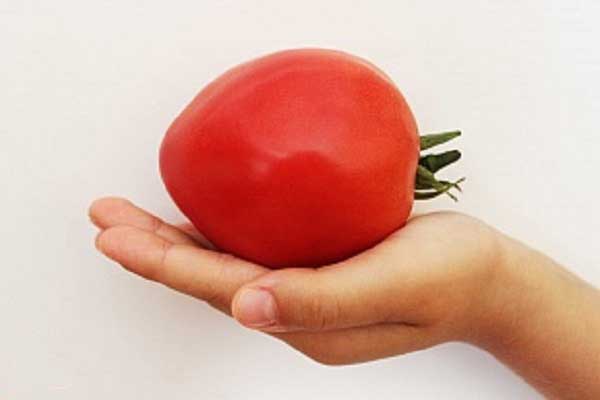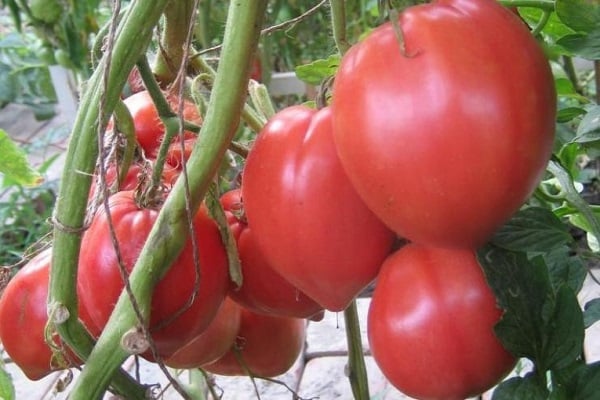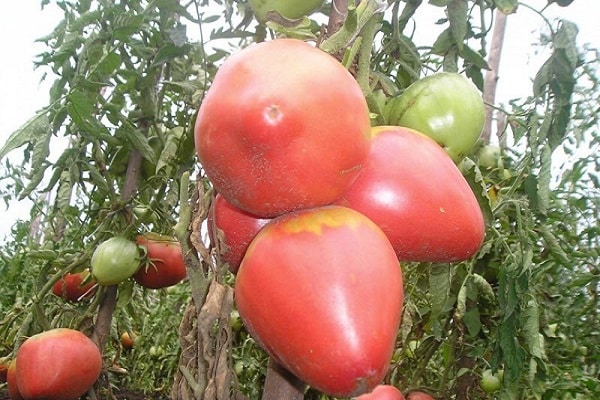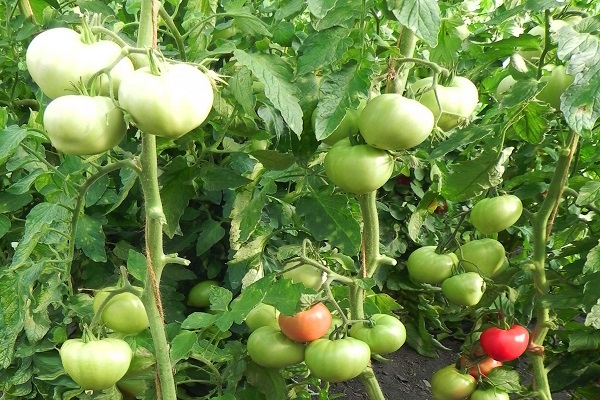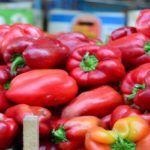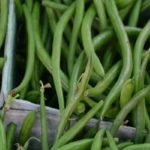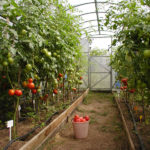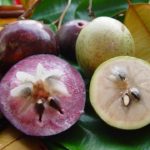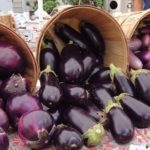Tomato Soul of Siberia f1 is a mid-early hybrid, tall, intended for planting and growing in open ground or greenhouses. The variety is resistant to diseases, the fruits do not crack and are even in size and shape.
Description of the variety
The fruits are aromatic and sweet, fleshy, with a smooth surface. Without a white core inside and a yellow spot at the stalk, without a seed inside. Seedlings are planted at a density of 3–4 stems per 1 m², on days 50–55. Plants need staking, removal of stepsons and formation into a single stem.
Based on reviews of the Soul of Siberia tomato, the variety is productive, the rounded fruits are distinguished by a balanced and pronounced taste. The collected fruits tolerate transportation well and ripen if collected unripe.
Tomatoes of the Dusha Siberia variety require mandatory staking. To increase productivity, it is important to install special stem supports.
Main characteristics
The Siberian region is famous for its fertile lands, which makes it possible to obtain the best varieties of tomatoes. The description of the variety consists of the following indicators:
- height - more than 180 cm;
- fruit size - up to 900 g;
- ripening time is 85–90 days;
- sweetish taste;
- pink color of heart-shaped fruits;
- universal growing method.
Some tomatoes reach sizes of 500–600 g, the first harvest can have fruits of 700–850 g. A bush with 2 stems in greenhouse conditions and 3 in open ground. The stems have 6–8 nests, the dry matter content is 5–7%. Productivity
Under favorable conditions, one bush produces 5–6 kg of harvest. On average, you get 20–25 kg of fruit per 1 m² - this is a good indicator.
Advantages and disadvantages of the variety
Tomatoes of this type have the following advantages:
- unpretentiousness to weather conditions;
- resistance to temperature changes;
- high yield;
- good resistance to diseases.
Tomatoes grow well in any type of soil and tolerate fertilizers of both natural and artificial origin.
Among the disadvantages, they note the need for high greenhouses and the presence of experience in tying up the trunk and supporting the branches.
Growing in greenhouse conditions allows harvesting throughout the year.This is especially true for Siberia, where summer is quite short.
Diseases and pests
A unique characteristic of the variety is that the fruits are not susceptible to fungal diseases. The presence of a disease may indicate extremely poor and inappropriate care.
To avoid problems when cultivating the variety, it is important to maintain soil moisture and ventilate the room in which the plants are located. Significant temperature changes will not cause harm to tomatoes, but you should still be careful.
Harmful insects can harm the growth and yield of the variety, for example, melon aphids or cutworms. In these cases, appropriate medications are used, following the instructions on the package. It is also important to constantly remove weeds on which pests can develop.
Slugs can cause considerable damage to bushes. They are dealt with by zoning the soil and removing excess tops.
In greenhouses, most often there is an invasion of melon aphids, against which the use of the drug “Zubr” is effective, and greenhouse whitefly, which can be controlled using the drug “Confidor”.
Rules of care
Care consists of fertilizing, watering and loosening the soil. It is important to water abundantly in the evening with cool water. If the plant is in greenhouse conditions, the room should be regularly ventilated.
Ripe fruits - features of use
Ripe tomatoes are not used for canning. Due to their taste and high vitamin content, tomatoes will be an excellent addition to a salad or other dish. The variety is suitable for making juice or paste. You can make salting using the barrel method.
Based on the above, the mentioned variety is quite easy to care for, does not require special conditions and is unpretentious.If you follow simple rules, you can get a fruitful and tasty harvest.

